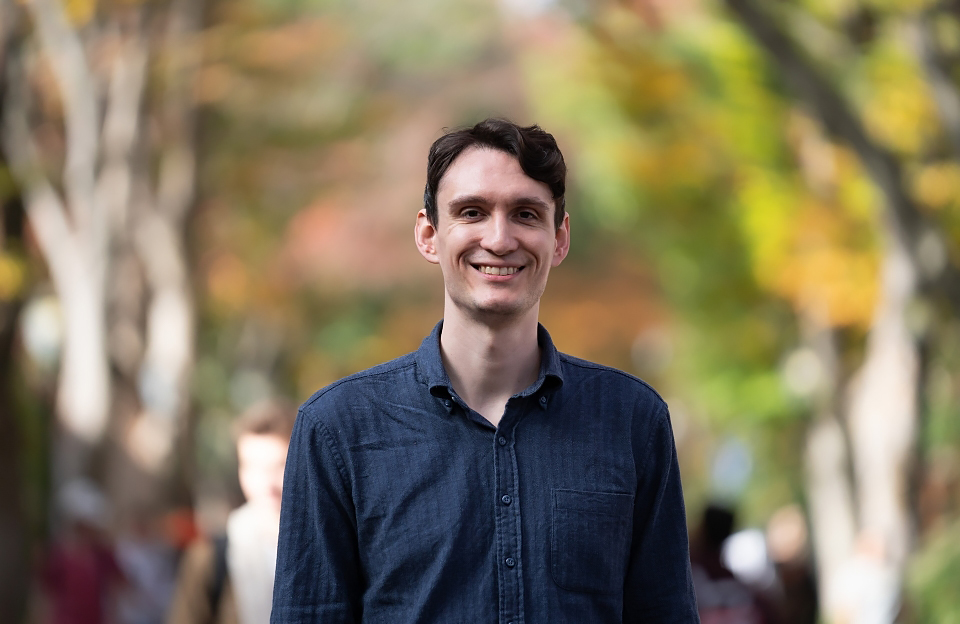Doctoral student Sam Wolken has always been interested in how people think, something that drew him to study literature as an undergraduate, and, now, to investigate the intersection between public opinion, local news, and politics.
Wolken, a joint doctoral student in communication at the Annenberg School for Communication and political science in the School of Arts & Sciences, made the decision to enter academia at a very tumultuous time in American politics: the lead-up to the 2016 presidential election.
“The media environment and the political environment was charged with aggressively polarized political rhetoric then,” Wolken says. “I would read articles quoting scholars in newspapers and then look them up. I discovered this interdisciplinary field of communication, something I didn’t know existed.”
He had been, at the time, working in strategic communications for a firm that handled big clients and big crises: political scandals, corporate reputation issues, even the United Nations’s response to an Ebola breakout, but he found that the fast-paced world of crisis communications wasn’t for him.
“It was interesting work,” Wolken says, “but I was more drawn to the research than anything else. We had researchers who would test if our messages were working or test what messages audiences may be responsive to, which I found really fascinating.”
Wolken decided he’d become a researcher himself.
Wolken now collaborates with some of the people whose work he studied as a master’s student, including his advisor, associate professor Yphtach Lelkes, co-director of the Polarization Research Lab.
Advised by Lelkes and Dan Hopkins in the Department of Political Science, Wolken has been investigating how the pressure to go viral might affect the stories outlets choose to cover and the way they frame the news.
“News outlets in the last 10 years or so, thanks to Google Analytics and social media platforms, have a level of insight into their audience that is quite novel,” Wolken says. “They have immediate insight into what resonates with their audience and what is gaining traction.”
This story is by Hailey Reissman. Read more at Annenberg School for Communication.








